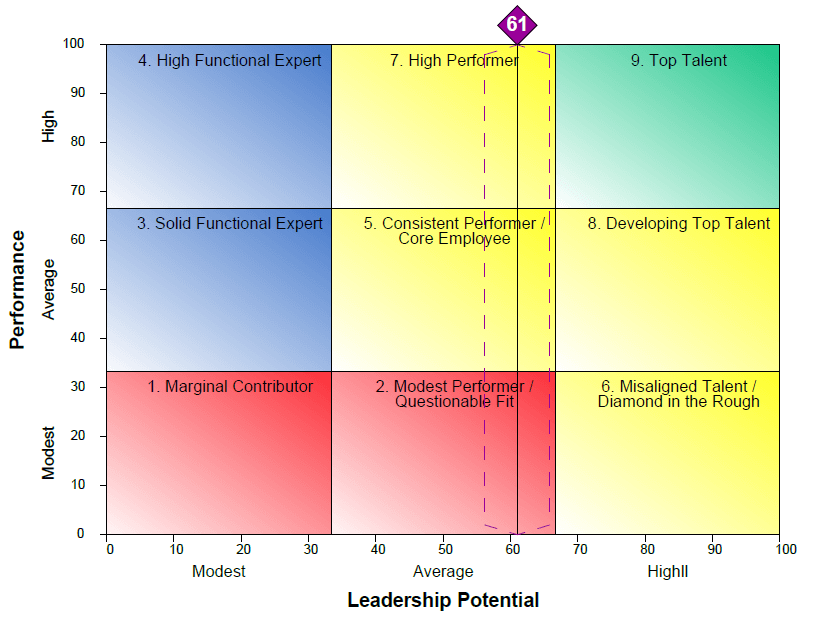The 9 Box Talent Matrix
The most emphasis for assessment of Performance and Potential is during the selection, development, and succession planning processes. Using assessments helps determine who to hire, what people need to develop, and who are the future leaders or the organization. To aid in these processes and in differentiating between employees on talent, AAI uses a 9-box grid.
9 Box Talent Matrix

Understanding where individuals lie on the 9-Box Grid allows organizations to set up specific development plans for each individual based on their combined potential and recent performance. This results in more specific and focused development for each individual, allowing the organization to put individuals in the critical or key opportunities that will help them develop to their full potential.
Unfortunately, many organizations struggle with effectively implementing processes to leverage tools like the 9-box grid. A common complaint within talent management is that individuals often seem to “appear” and “disappear” from their list of high talent within the organization – people who at one point were considered Developing Top Talent and potential future leaders might be found to be a Consistent Performer the next year. This is because many organizations struggle with a stable definition of potential and they put too much weight on performance when plotting people into the 9-boxes. It is then critical for organizations to understand what is meant by potential.
Potential refers to the likelihood an individual will succeed and contribute in future roles. This is different from performance, which refers to the measurement of how well an individual has performed in their current roles in the recent past. Performance is usually captured by the organization’s performance review process. While performance often fluctuates, potential remains relatively stable and does not typically change across short time frames. It is mainly determined by cognitive ability and certain supporting personality traits called behavioral growth potential that have been found to be associated with successful leaders. AAI’s Leadership Potential Inventory assesses both potential factors, cognitive ability and behavioral growth potential, and combines the measures into an Overall Advancement Potential score. More info.
